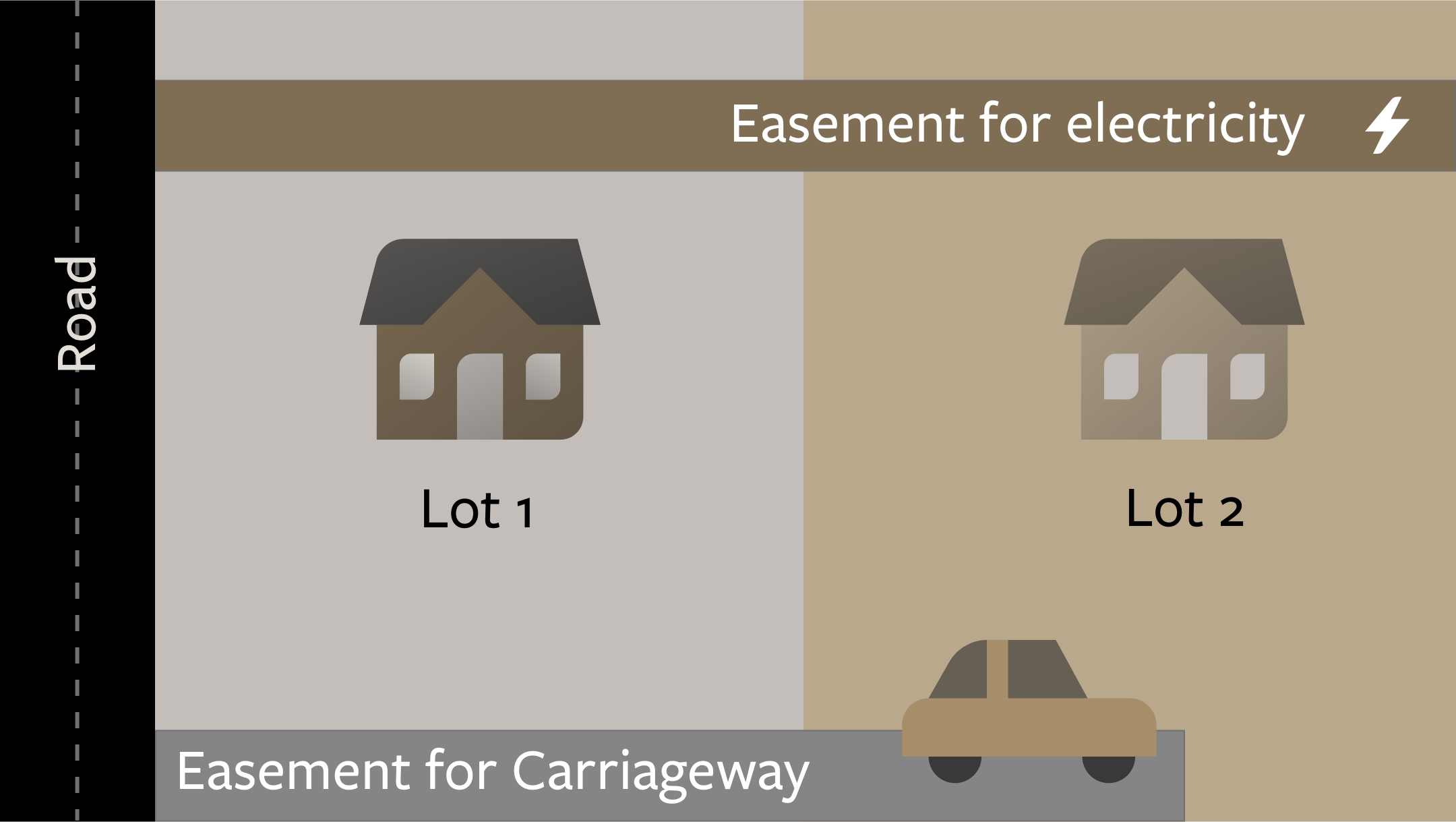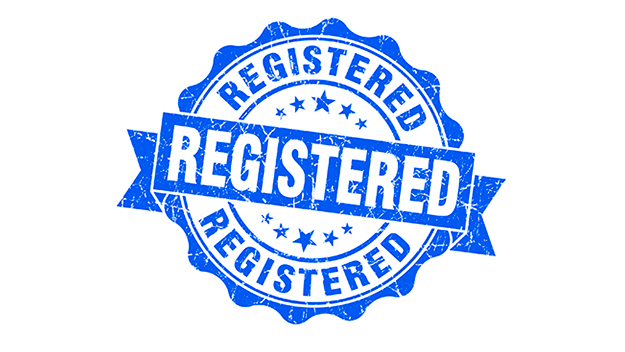An easement put simply, is a proprietary interest in somebody else’s land. The most common forms of easements are rights of way and easements for services, such as water, electricity or sewerage.
The below diagram is a simple example of some different easements over land.

As you will see, there are two easements in this diagram. Lot 1 has two easements which burden the land and Lot 2 has one benefited easement and one burdened (or servient) easement.
The first easement, which is depicted in orange, is an easement for a right of carriageway (or right of way). This easement gives Lot 2 the right to access their lot through Lot 1’s land. Without this easement, Lot 2 would be landlocked and would not have legal access to their property from the road. The right of carriageway is burdened upon Lot 1 and benefited upon Lot 2. In our example, the orange easement is likely to be a road, driveway or track which the owner of Lot 2 drives down from the road to get to their land – he or she has the right to use this at all times, and the owner of Lot 1 must not obstruct or interfere with this use.
The other easement, depicted in purple, is an easement for electricity – this is where electricity lines run over the Lots. The easement burdens both Lots 1 and 2 and benefits the electricity company. The electricity company has the right to install their equipment on the easement land, and to enter the easement land to maintain or repair it.
Easements are usually but not always registered on the Title to the property. Registration takes place with Land and Property Information in NSW and the Office of Regulatory Services in the ACT. The purpose of registering an easement over land is to show on the public record that an easement exists. If you are purchasing land which has an easement registered on title, you are therefore aware of what the easement is, who it benefits and how it will impact upon your use of the land.
For example, if you have an easement on your land, you will not be able to build any structure on or over the easement land or use the easement land in any way which interferes with the rights of the benefited party, otherwise the owner of the land benefited by the easement may have the right to sue you, or to destroy the structure to gain access to the easement without being liable to compensate you for the damage.
If an authority has an easement registered over your land, they have the right to access the easement to maintain or repair the easement land or their equipment on the land. Action can be taken against if you interfere with their right to access the easement – for example you can’t lock or fence them out of the easement land, nor build over the easement land. If you did, the authority may then have the right to cut the lock, knock down part of the fence, or destroy your building or structure that is on the easement land.
If you are the benefited lot to an easement (i.e. Lot 2 above with the Right of Carriageway) and the burdened lot owner interferes with your right to use the easement, then you have the right to remedy.
There are two ways in which a benefited lot can take seek a remedy, these are:
- Abatement – That is the right to abate the interference of the easement. For example, say on our diagram, Lot 1 had built a shed over the orange easement, Lot 2 would have the right to pull down the shed to gain access to their property. Lot 2’s owner must ensure that:
- the force used is reasonable;
- it is not likely to be a breach of peace; and
- no injury to the public is caused.
However, the Courts have stated that while this right exists, it is not encouraged.
- Action – Legal action can also be taken against the servient lot. The owner of an easement can sue for damages, nuisance or seek an injunction.
Who Maintains an Easement?
Normally, the grant of an easement does not, of itself, impose on the burdened easement any obligation to make the easement suitable for use by the occupants of the benefited easement. So, for example, on Lot 1 the owner is not required to make up the way to any particular standard, or to maintain it at any particular standard. Nor is Lot 1 required to take steps to ensure the occupants of Lot 2 continued access to the easement. Lot 1’s only duty is to refrain from acts that would obstruct Lot 2’s use of the land. It follows that a the owner of the benefited lot who wishes to ensure that the easement remains useable, must do any necessary maintenance. For these purposes, Lot 2 has an implied right to enter the servient land to do whatever is reasonably necessary to make the easement suitable for the exercise of the right granted and to maintain it in a condition suitable for that use.

If you have a question about an easement which either benefits or burdens your land, or you wish to create an easement, please contact one of our experienced property lawyers to make an appointment on +61 2 6206 1300, by email on info@elringtons.com.au or alternatively you may use our contact form.






